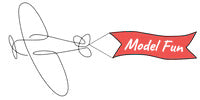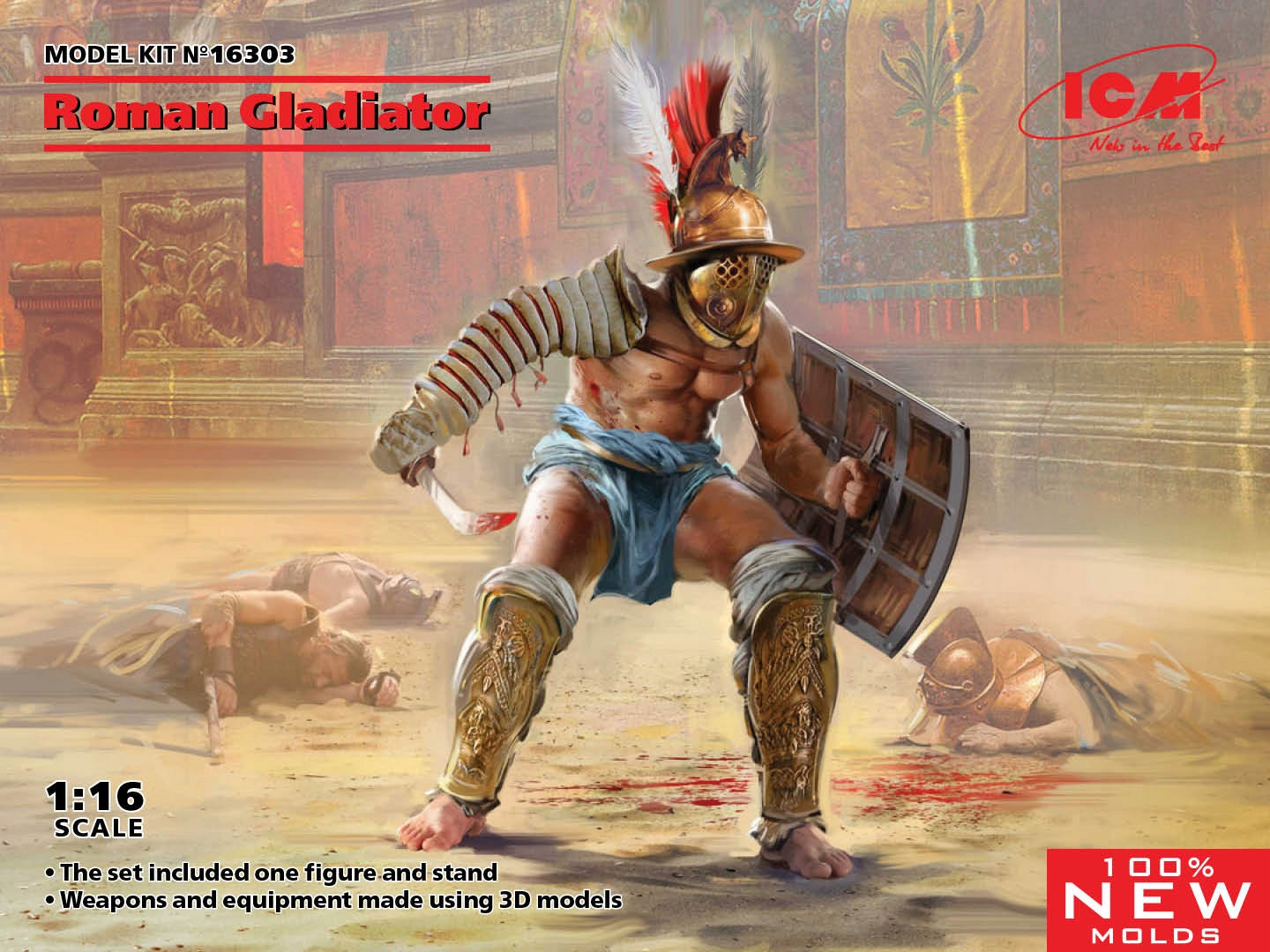
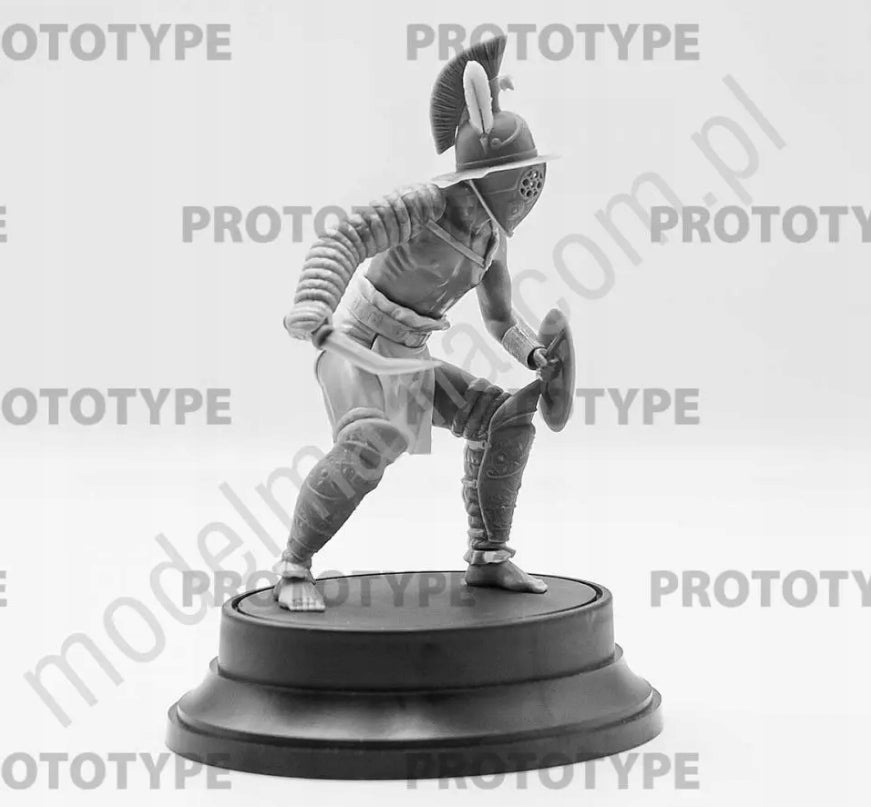
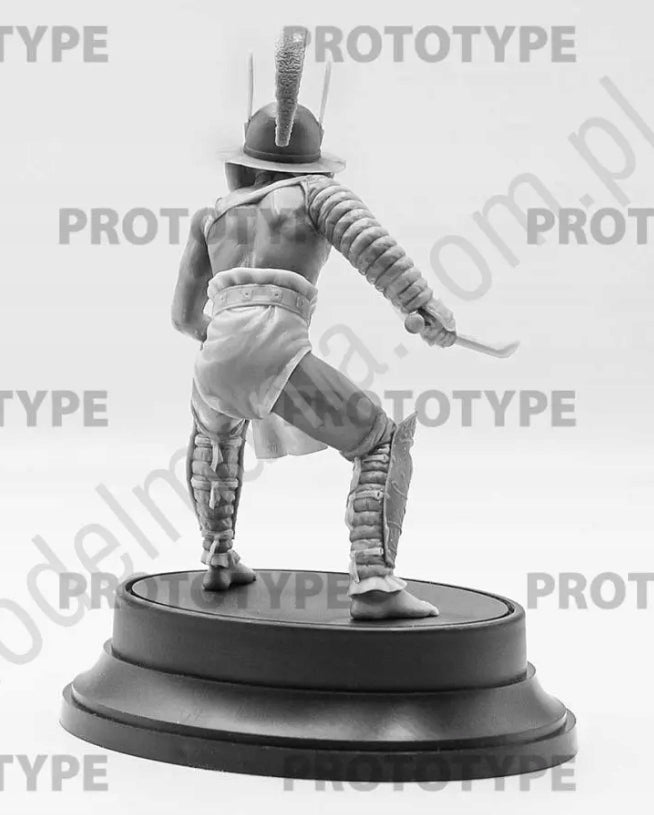
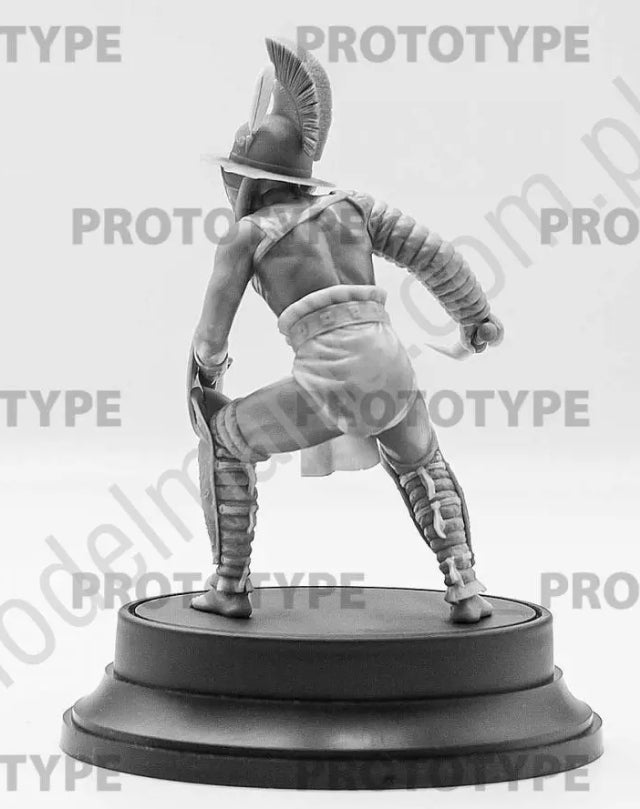
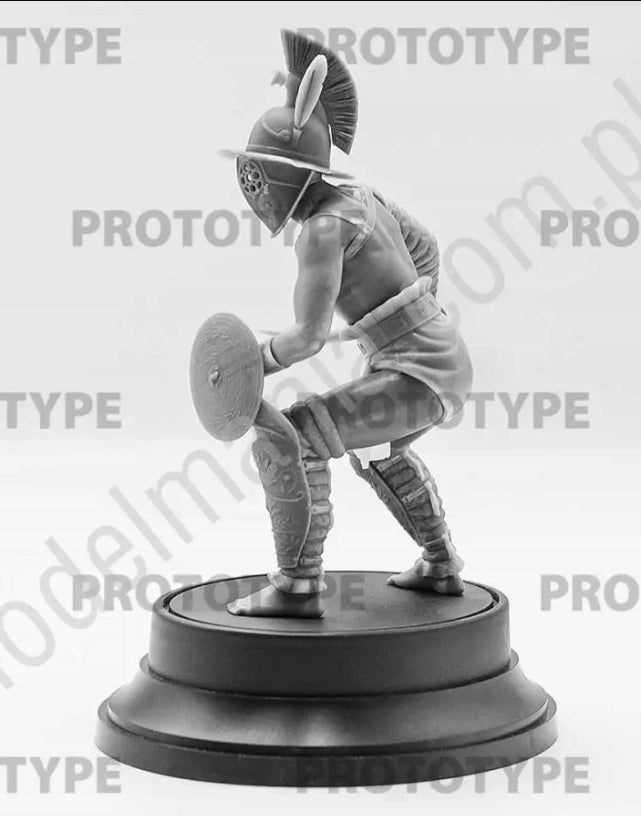
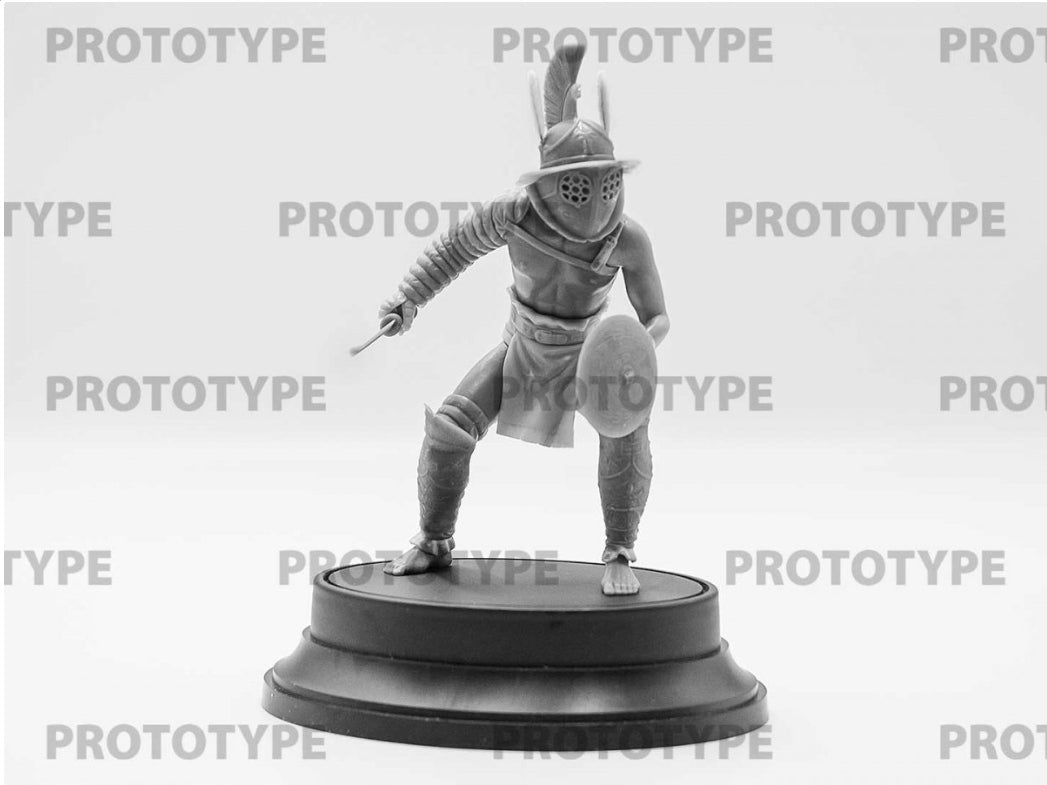
ICM 16303 Roman Gladiator 100% new molds
In ancient Rome, gladiators were specially trained slaves who fought in the arena to entertain the crowds. It is widely accepted that the custom of gladiatorial combat was adopted by the Romans from the Etruscans and, most likely, the Samnites. The first gladiatorial combats in Rome are documented in the 3rd century BC, and the first gladiatorial combat organized by Roman consuls took place at the end of the 2nd century BC (ca. 105 BC). For the record, gladiatorial combat was banned in the 4th century AD, as Christianity gained ground in the Roman Empire. Many gladiators were Germanic, Thracian, and Gaulish, although there were also some native Romans among them. During the 3rd-1st centuries BC, the main center of gladiator training was Campania, particularly Capua, where special schools for preparing gladiators for combat operated. Gladiators were divided into several types based on their weapons, including: Andabat (gladiator wearing chain mail and a helmet with a visor),
W starożytnym Rzymie mianem gladiatorów nazywano specjalnie przeszkolonych niewolników, którzy mieli toczyć ze sobą walki na arenie ku uciesze tłumów. Dość powszechnie przyjmuje się, że zwyczaj walk gladiatorów został przejęty przez Rzymian od Etrusków oraz zapewne Samnitów. Pierwsze walki gladiatorów w Rzymie są poświadczone źródłowe w III w. pne, a pierwsza walka gladiatorów organizowana przez konsulów rzymskich miała miejsce u schyłku II w. pne. (ok. 105 r. pne). Dla porządku warto dodać, że walki te zostały zabronione w IV w. ne., wraz rosnącą pozycją chrześcijaństwa w Imperium Romanum. Wiele gladiatorów było Germanami, Trakami oraz Galami, chociaż zdarzali się wśród nich również rdzenni Rzymianie. W okresie III-I w. pne, głównym ośrodkiem szkolenia gladiatorów była Kampania, a zwłaszcza Kapua, gdzie funkcjonował specjalne szkoły przysposabiające gladiatorów do walk. Gladiatorów, ze względu na uzbrojenie dzielono na kilka typów, między innymi: Andabata (gladiator ubrany w kolczugę oraz hełm z zasłoną), Myrmilo (he wore a fish-shaped helmet, arm guard, sword, and oblong shield) and Retiarius (his weapons included a trident or harpoon, dagger, and net; he most often fought without a helmet). It's worth noting that gladiators organized at least several uprisings in Roman history, including the First Sicilian Revolt (138-132 BC), the Vettius Revolt, and, above all, the Spartacus Revolt of 73-71 BC, the suppression of which posed numerous challenges for the Romans.
ICM products are covered by a lifetime warranty and direct manufacturer service.
Even if you damage a component yourself, you can submit a request for a replacement!
Just fill out the form available at the address below:
https://icm.com.ua/contacts/


Roman Gladiator 1:16 ICM 16303
Scale: 1/16
Number of parts: 44
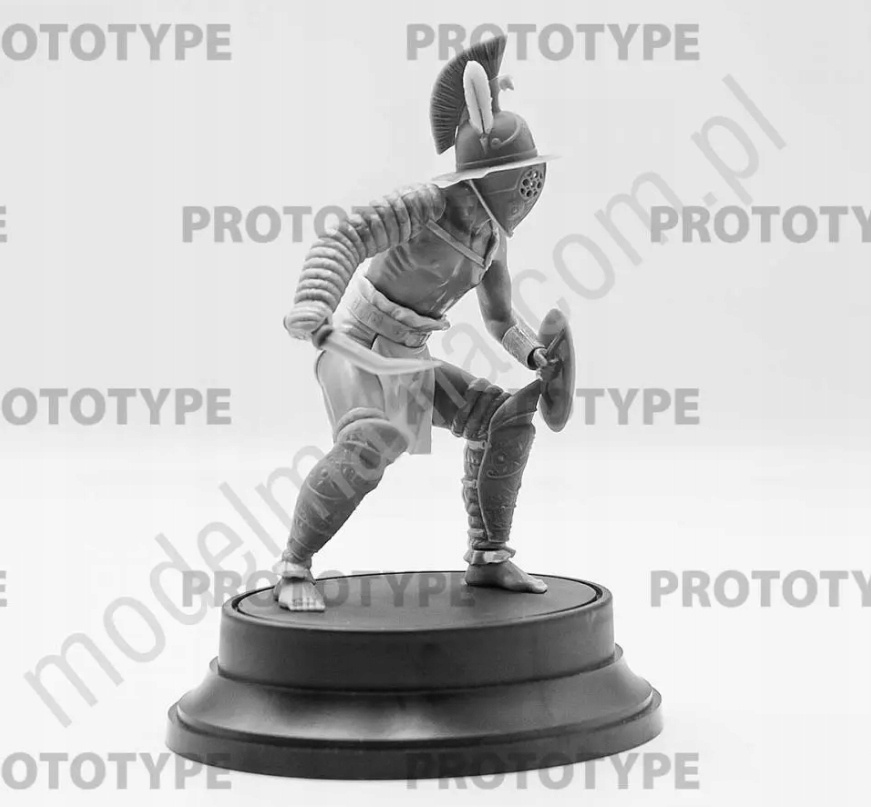
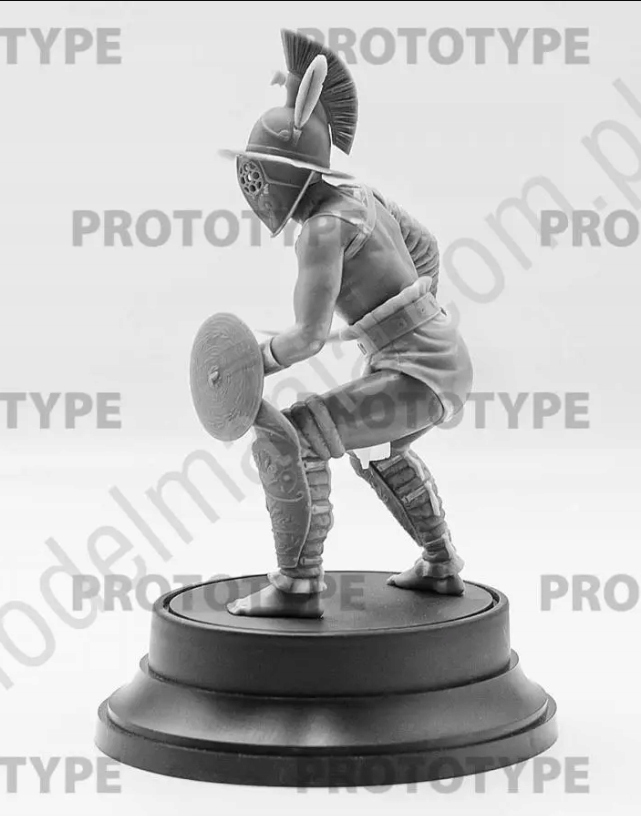
This kit requires self-assembly and painting. Paints and glue not included.
Pairs well with

ICM 16303 Roman Gladiator 100% new molds
If you have any questions, you are always welcome to contact us. We'll get back to you as soon as possible, within 24 hours on weekdays.
-
Shipping Information
Use this text to answer questions in as much detail as possible for your customers.
-
Customer Support
Use this text to answer questions in as much detail as possible for your customers.
-
FAQ’s
Use this text to answer questions in as much detail as possible for your customers.
-
Contact Us
Use this text to answer questions in as much detail as possible for your customers.
